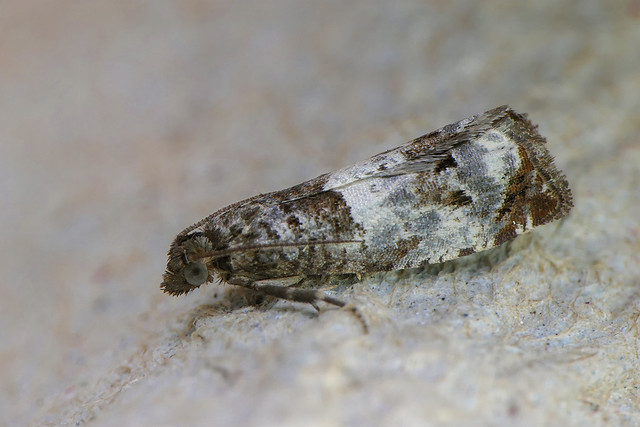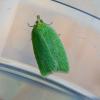Tortricidae

The Tortricidae, commonly known as tortrix moths, are a large family of over 9,400 species in the superfamily Tortricoidea, with around 390 species recorded in the UK and over 1,600 in Europe. The family was established by Pierre André Latreille in 1802.
Adults have wingspans of 8–35 mm, with broad, often bell-shaped forewings held flat along the sides of the body at rest, forming a tubular or slightly roofed silhouette. Coloration varies widely—many are cryptically patterned, but some are brightly marked. Most are nocturnal.
Larvae are leaf rollers, bud borers, or fruit feeders, constructing silk shelters; many are major agricultural and forestry pests, including Cydia pomonella (codling moth), Archips podana (fruit tree tortrix), and Grapholita molesta (oriental fruit moth).
The family includes subfamilies Tortricinae (with Tortrix, Archips), Olethreutinae (with Cydia, Grapholita), and Chlidanotinae. Recent molecular studies have refined tribal and generic boundaries, especially in pest lineages.






















